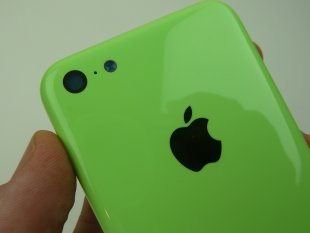Excitement over the new iPhone is building to a frenzy this week as rumors abound that Apple (AAPL) will unveil upgraded models on September 10.
That would be almost exactly a year after Apple introduced the iPhone 5, which grabbed the title of best selling smart phone model in the world last year.
Apple isn’t commenting on new models yet but the September 10 introduction date has been confirmed by major news organizations including the Wall Street Journal’s AllThingsD and dedicated Apple bloggers such as Jim Dalrymple.
The rumored new handset, expected to be called the iPhone 5S, will probably look quite similar to the current model 5 but is sure to be lighter and more powerful than ever. It may also be accompanied by a lower-priced, plastic-cased model, dubbed the iPhone “5C” on the Internet.

Pictures leaked onto the Web of the purported lower-priced iPhone show an array of bright colors instead of just the same old black and white models available in recent years. That would make 2013 a banner year for colorful phones, as the new Google (GOOG) Moto X phone arriving in stores in a few weeks is being offered in 18 colors.
A rising share price
And it's not just customers who are excited about a new iPhone. Investors have been driving up Apple's share price — even before billionaire hedge fund manager Carl Icahn tweeted this week that he had bought a large position. After lagging the market for most of the year, Apple shares have gained 17% over the past month.
Apple remains a top player at the high end of the smartphone market, especially in the United States, where most carriers subsidize more than two-thirds of the cost of a new phone for customers who sign a two-year contract.
The lower-priced phone would help Apple better compete for customers who pay month to month and those who live in less-wealthy countries where carriers don’t offer subsidies. Apple currently offers older models, such as the 2010 iPhone 4, to those customers. But the older phone still costs $450 without a subsidy and may lack the appeal of more recent models running Google’s Android software.
“They’ve been wickedly profitable but their market share is kind of plateauing,” says Ramon Llamas, mobile research manager at IDC. Apple captured 18% of the smartphone market in 2011 and 2012, according to IDC. “A little more attention to emerging markets is warranted.”
Competitors with $200 to $300 phones have been growing faster than Apple in many less-wealthy markets, according to data from Gartner. Apple sold 31.9 million phones worldwide in the second quarter, up just 10% from a year earlier, Gartner reported, second to Samsung. But Apple’s next three competitors – LG Electronics (066570.KS), Lenovo Group (0992.HK) and ZTE (0763.HK) – sold almost as many, 31.8 million combined, as their sales jumped 93%.
Still, Llamas isn’t sure a new lower-priced phone is needed. Lower pricing and greater promotions of older models could work just as well, he argues.
Could the cheap phone move backfire?
And Apple’s rumored move to offer lower-priced new iPhones could backfire. Some analysts fear that a portion of wealthy customers will forgo buying more-expensive models in favor of the “5C.” That could cut into Apple’s revenue and profits. The move could also tarnish Apple’s reputation as a leading premium phone maker, particularly if the lower-priced model is seen as chintzy or with key functions crippled.
But if Apple announces a lower-priced model, it is more likely to create a desirable, full-featured product in keeping with the company’s premium image, according to John Gruber, who has followed Apple for over a decade at his website, DaringFireball.net.
“The 5C is not about selling a piece of junk to some sort of unwashed masses,” Gruber wrote on Tuesday. “It’s about continuing to push the price down to expand the iPhone’s market without changing what the iPhone brand stands for.”
At the high end
Following a pattern Apple has established over several years, the new high-end iPhone is likely to retain the outward appearance of the current iPhone 5. Apple tends to produce a major iPhone overhaul only every other year, in keeping with the two-year contract cycle of many mobile phone subscribers. And pictures floating on the Internet show a rumored new iPhone with a similar shape and upgraded internal components to the current model.

But many analysts expect Apple may incorporate a brand-new feature this year – a fingerprint reader hidden in the iPhone’s tiny home button. Apple bought mobile security firm AuthenTec and its fingerprint-scanning technology last year for $356 million. And text contained in beta versions of Apple’s new iOS 7 software appears to reference a finger print sensor, too.
“It’s a great way to ease the hassle of remembering passwords,” says Ken Hyers, senior analyst at Strategy Analytics. “It will be much more reliable than the facial-recognition technology that Samsung first introduced with the Galaxy S3, and easier to use, too.”
Combined with several wireless technologies already in the iPhone, the fingerprint scanner could also be part of a new mobile-payments network from Apple. That would be quite different from Google’s Google Wallet payment system, which relies on phones that have specialized hardware, known as a Near Field Communications, or NFC, chip. U.S. mobile carriers have blocked Google Wallet apps and are planning to roll out their own NFC-based payment network known as Isis. But neither has caught on yet.
Apple’s system, relying on Bluetooth and Wifi standards, could ignore the NFC wars and build off its existing iOS app called Passbook, which currently works for items like travel and entertainment tickets. Apple mobile development chief Craig Federighi made fun of Android's NFC-based file transfer system at the company's developer conference in June. "There's no need to wander around the room bumping your phone," he said, referencing the system featured prominently in Samsung television ads.
Apple fans hoping for a bigger screen are likely to be disappointed. Android phones have featured ever larger screens – the new LG G2 model unveiled August 7 has a 5.2” screen, one of the biggest yet. Google's Moto X phone has a 4.7" screen.
But Apple is trying to avoid further fragmenting its lineup in order to make it easier for developers to write apps that will look good and run smoothly on all iOS hardware. Analysts expect Apple will stick with the 4” screen introduced on last year's iPhone 5. The screen was slightly longer than earlier models but maintained the same width, so apps that weren’t updated for the new size could just display a black bar over the extra space.
Some analysts say Apple needs to move to bigger screens to better compete against Android. That probably won't happen until the company's 2014 upgrade cycle.
“It’s just like in the movie 'Jaws' – what we need is a bigger boat,” says Roger Entner, founder of Recon Analytics. “If you’re going to charge a premium and seek to delight your customers, you have to be leading, not following, the trend.”
To keep up with all the latest tech industry news, follow Aaron Pressman on Twitter and Tumblr.
Check out more Yahoo! Finance content here on Tumblr.















0 comments:
Post a Comment